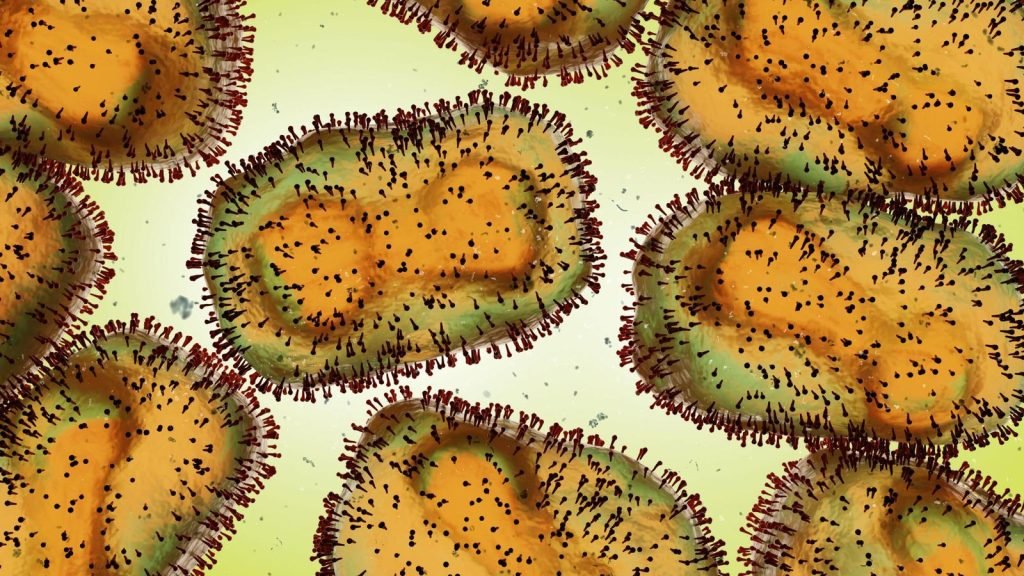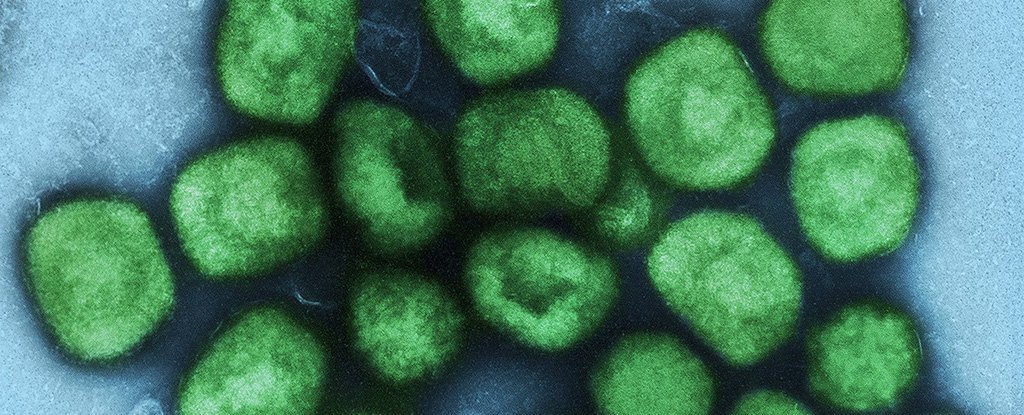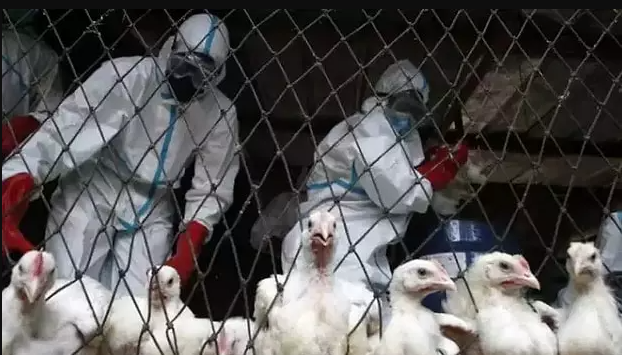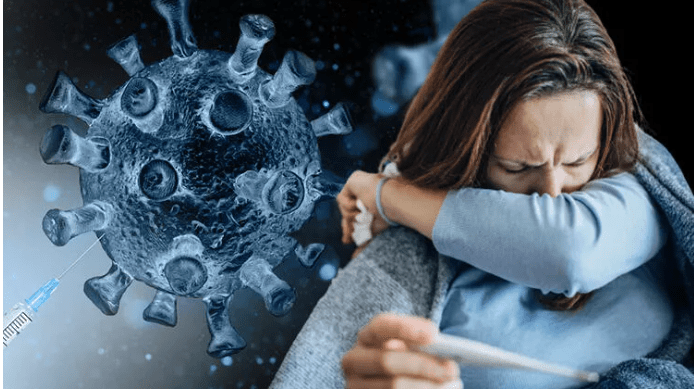More than 1,050 cases of monkeypox have been identified in the US as of Wednesday (July 13), although some experts believe that this number may be significantly understated due to the lack of diagnostic tests in the nation.
According to the Centers for Disease Control and Prevention (CDC), approximately 10,800 instances of monkeypox have been found so far this year in nations where the virus doesn’t generally travel, including the US.
Laboratory-confirmed cases of monkeypox and infections linked to an Orthopoxvirus, the genus of viruses that includes monkeypox, smallpox, which has been eradicated, and the related cowpox and camelpox viruses, which very rarely jump to humans, are included in both the global case count and the US case count.
- An Odd Fossil Found in South China Shows an Interesting Connection to the First Americans
- Heatwave in Western Europe to Peak in Spain
According to the CDC, a family of monkeypox viruses known as the West African clade is what’s causing the outbreak.
Children under the age of 8, persons with compromised immune systems, those who have a history of eczema, pregnant women, and those who are nursing have a higher chance of developing serious or fatal illness from this group of viruses.
By providing tests to five private laboratory companies, the CDC and the US Department of Health and Human Services (HHS) announced in late June that they had started to increase the nation’s capacity for monkeypox testing.
By the beginning of July, healthcare providers will be able to access these laboratories, and testing capacity through these businesses will be ramped up all month long, according to the HHS.
However, monkeypox testing has typically been difficult to come by since the first US cases were discovered in May, so the CDC’s official case count is probably inaccurate, Keletso Makofane, an epidemiologist at Harvard University, told NPR.
That’s in part because getting testing in the past required health care practitioners to go through a time-consuming process, and in part because many of them were only giving tests to patients whose conditions fit a certain description of what monkeypox looks like.
Symptoms of monkey pox
In light of this, Live Science previously reported that the CDC recently modified its recommendations for who should be tested for monkeypox depending on their symptoms. The government stated in this health advisory that several recent cases of monkeypox in the US have not matched traditional descriptions of the illness.

It is generally believed that monkeypox infections begin with flu-like symptoms, such as fever, headache, muscle aches, swollen lymph nodes, and exhaustion.
Following this, the recognizable “pox” rashes start to show up, typically on the face, inside the mouth, and then on the hands, feet, and other limbs.
Initially appearing as discolored patches of skin, these rashes develop into raised bumps, blisters, and sizable, pus-filled pimples that finally scab over and fall off. These symptoms typically go away in two to four weeks.
However, some patients’ symptoms during the current outbreak have deviated from the typical pattern. The CDC noted that some patients, for instance, either experienced flu-like symptoms before or after their skin rashes.
Some patients initially experienced vaginal and anus rashes, which led to painful inflammation and rectal bleeding symptoms. Additionally, it is uncommon for patients to have rashes at the same body region that are in distinct phases of development.
Patients suspected of having these conditions should also be tested for monkeypox, the CDC advised. Monkeypox rashes can be confused for those brought on by Varicella zoster, the virus that causes chickenpox, or for some sexually transmitted infections, such as syphilis and herpes.
How the Pox is Transmitted
According to the World Health Organization, monkeypox spreads when people come into contact with an infected person’s rashes or anything contaminated with their bodily fluids, like garments or bedding (WHO).

Spit and mucus droplets from the respiratory tract can also transmit an infection, but this method typically necessitates “prolonged” face-to-face contact. The virus can spread through the placenta in pregnant women and through close contact with neonates both during labor and afterward.
The monkeypox viruses that are causing the current outbreak may have a reproduction number, or R-naught (R0), of 0.8, according to preliminary studies, the WHO stated. Accordingly, a single infected individual typically infects 0.8 more persons.
However, since this group has so far been home to the bulk of confirmed cases, the virus’s R0 may be higher than 1 among males who have sex with men. This isn’t because monkeypox is a sexually transmitted illness or because guys who have sex with males are more likely to contract it; rather, it’s because the virus is now circulating inside this social network.
Treatments and vaccines for monkeypox in the US
Although many patients recover without the need for specialized care, there are no medications licensed especially to treat monkeypox.
However, in severe situations, patients can be given antiviral drugs meant to treat other illnesses. For instance, they might be given tecovirimat (trade name TPOXX), a smallpox treatment that also fights against other orthopoxviruses, per the CDC.
Vaccinia Immune Globulin Intravenous (VIGIV), which comprises antibodies extracted from persons whose blood was inoculated with the smallpox vaccine, may also be used to treat severe monkeypox infections.
According to the CDC, individuals who have recently been exposed to monkeypox may also be given either the JYNNEOS or ACAM2000 vaccination to lessen the severity of their symptoms or avoid the infection completely.
ACAM2000, which poses a risk of serious side effects in immunocompromised individuals, pregnant women, and older persons, is often favored over JYNNEOS, a more recent vaccination that is authorized for both monkeypox and smallpox.
A campaign to increase vaccination access during the present monkeypox outbreak was started by the CDC and the HHS on June 28.
All individuals with confirmed or suspected exposures to monkeypox are now eligible for a free vaccination, the statement reads, including “men who have sex with men who have recently had multiple sex partners in a venue where there was known to be monkeypox or in an area where monkeypox is spreading,” “those who know their sexual partner was diagnosed with monkeypox,” and “those who had close physical contact with someone diagnosed with monkeypox.”
The implementation of the immunization program hasn’t gone smoothly, though, so far.
The New York Times said that once the plan was announced, experts criticized the deployment as being too gradual and small-scale.
The CDC and the HHS started a campaign on June 28 to increase vaccine accessibility during the ongoing monkeypox outbreak.
All individuals with confirmed or suspected exposures to monkeypox are now eligible for a free vaccination, the statement reads, including “men who have sex with men who have recently had multiple sex partners in a venue where there was known to be monkeypox or in an area where monkeypox is spreading,” “those who know their sexual partner was diagnosed with monkeypox,” and “those who had close physical contact with someone diagnosed with monkeypox.”

The implementation of the immunization program hasn’t gone smoothly, though, so far.
The New York Times said that once the plan was announced, experts criticized the deployment as being too gradual and small-scale.
Health and city officials in San Francisco have already asked the federal government to give more vaccine doses right away, claiming that the present demand far exceeds the supply, according to a story in the San Francisco Chronicle.
Similar to this, New York City’s vaccine appointments have been filling up as soon as they are made available. As a result, the city’s mayor, Eric Adams, recently wrote to President Joe Biden to request additional doses to give out, according to Gothamist.
In the meantime, CNN on Thursday reported that no vaccine doses had yet been administered to New Mexico and South Dakota, two states with confirmed instances of monkeypox (June 14).





